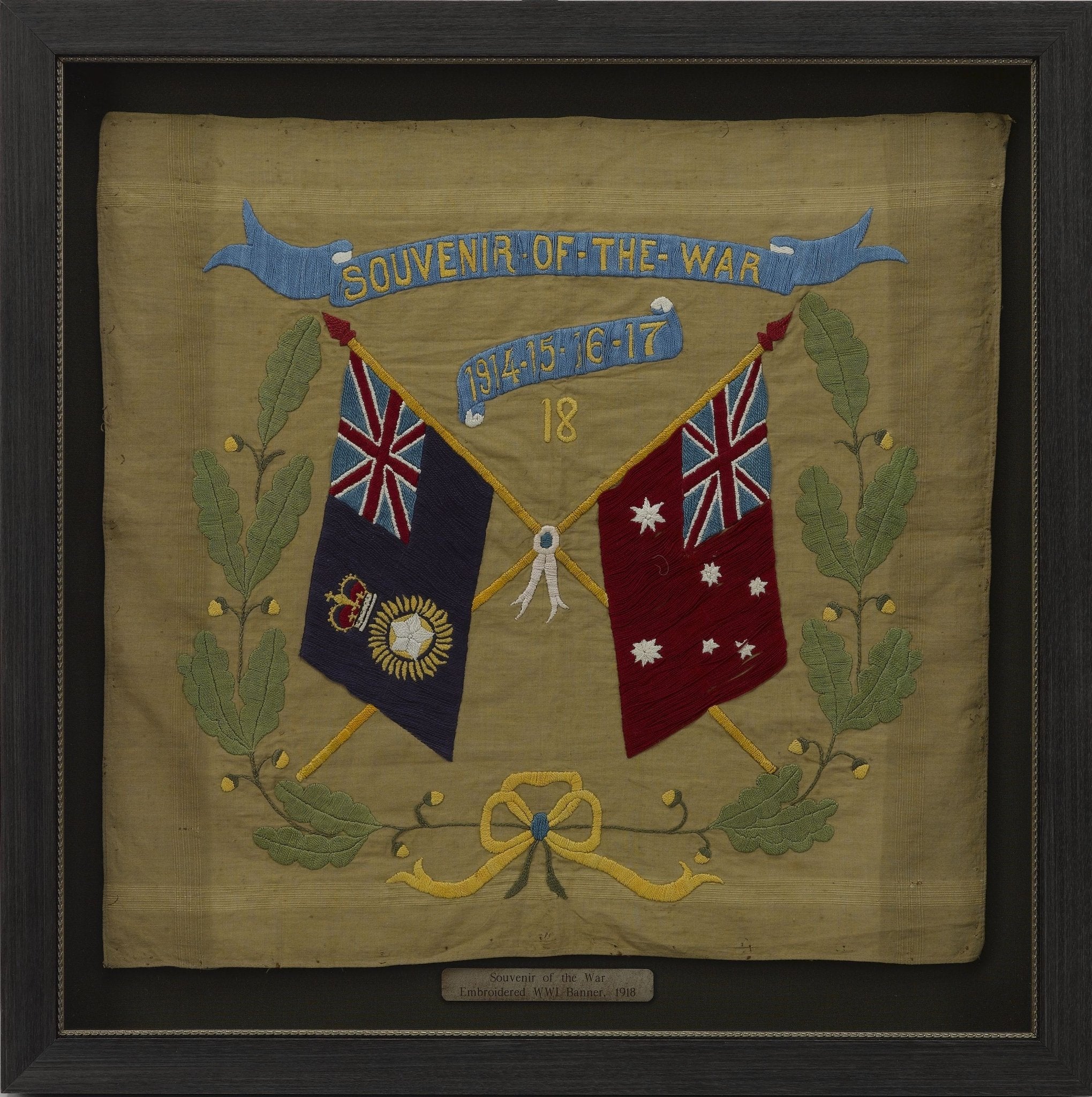
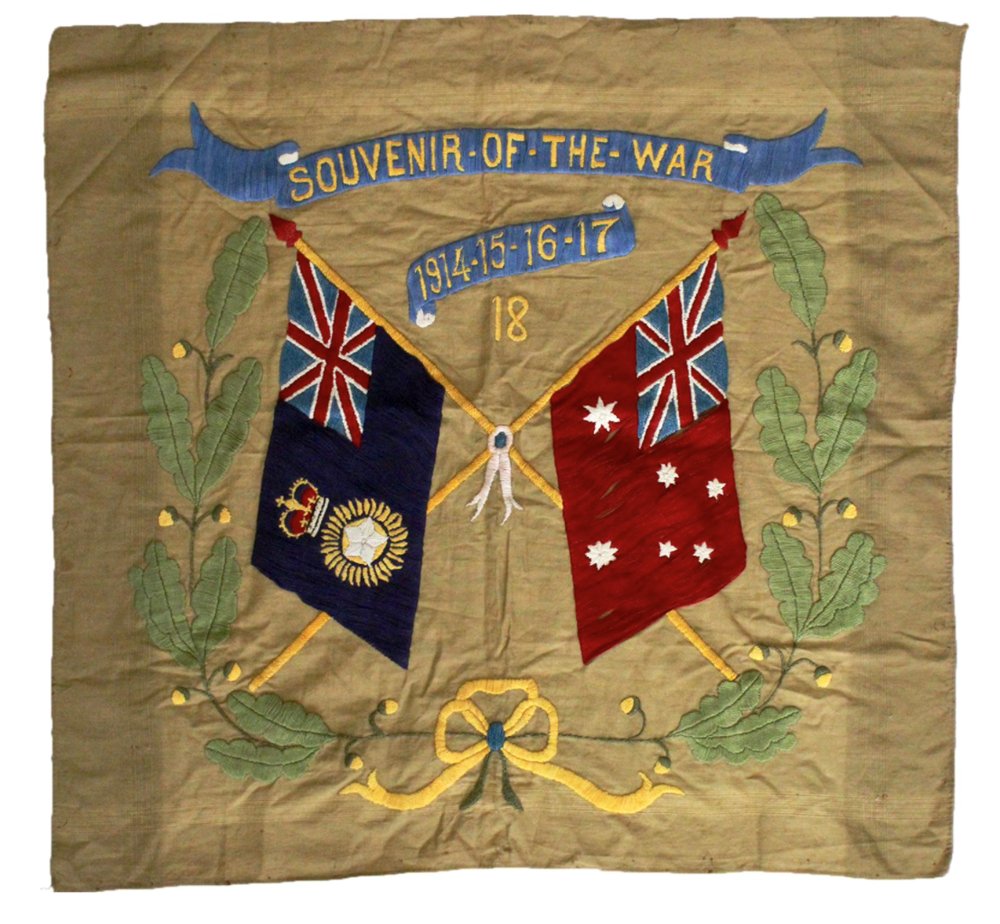
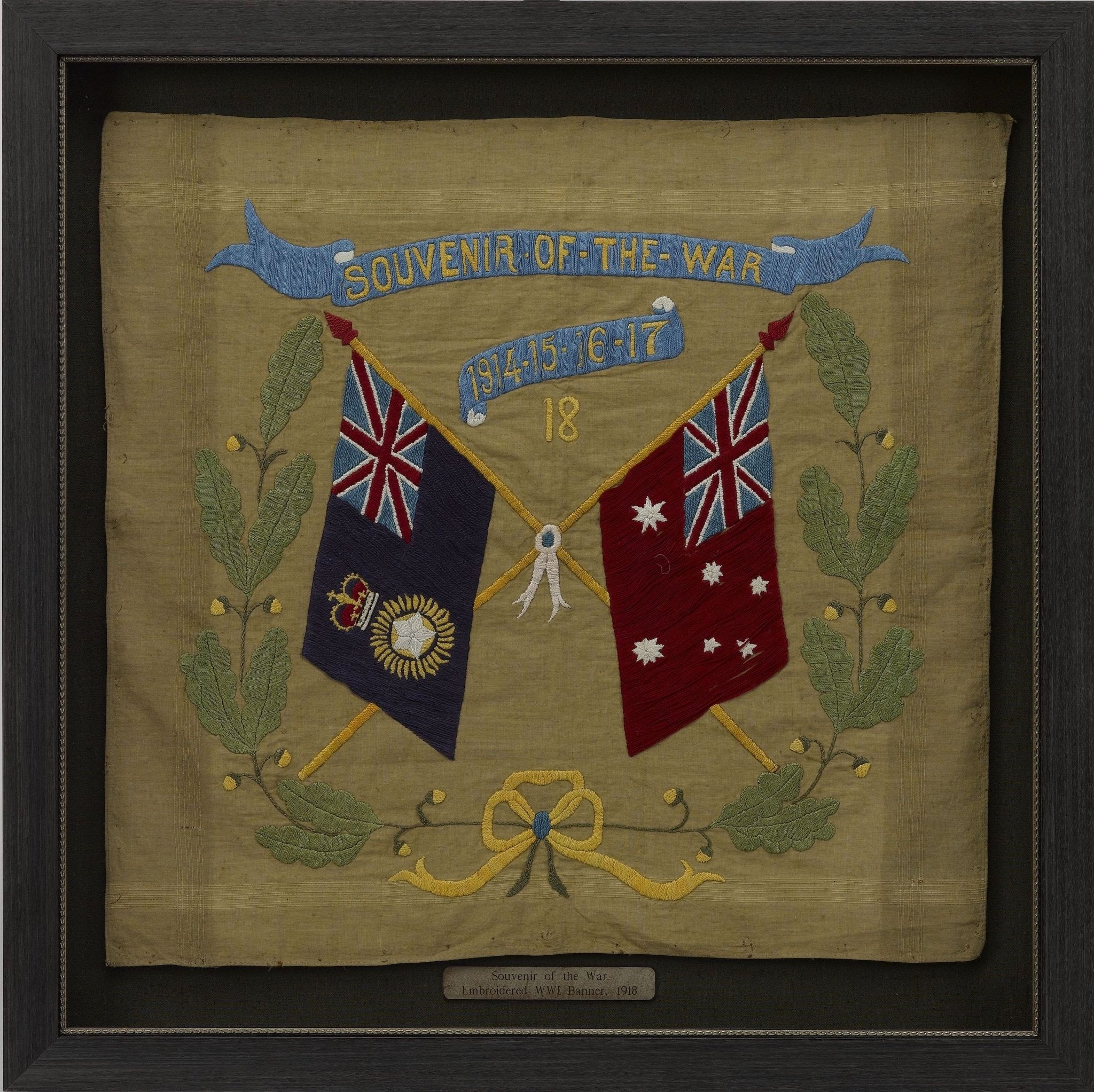
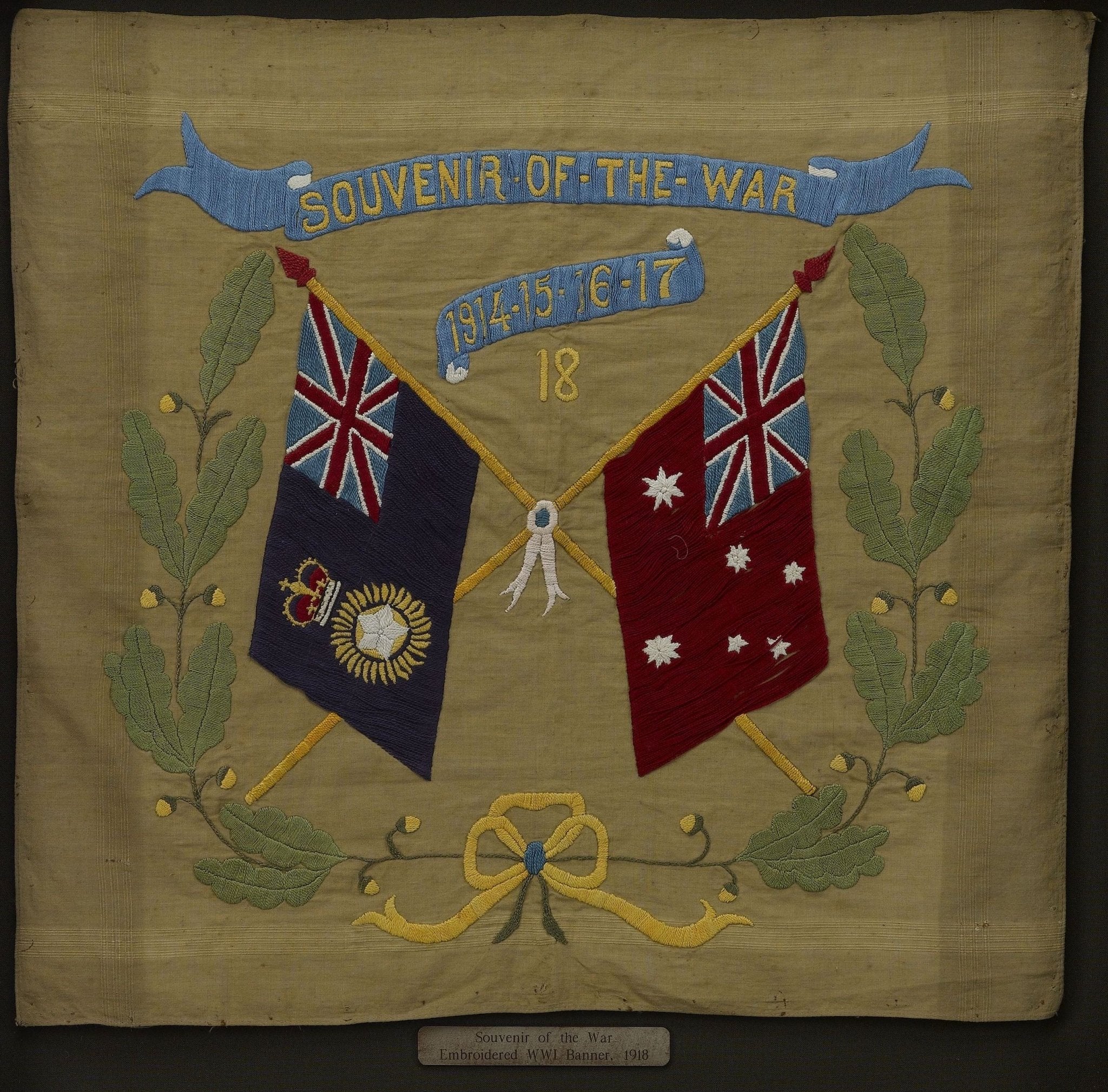
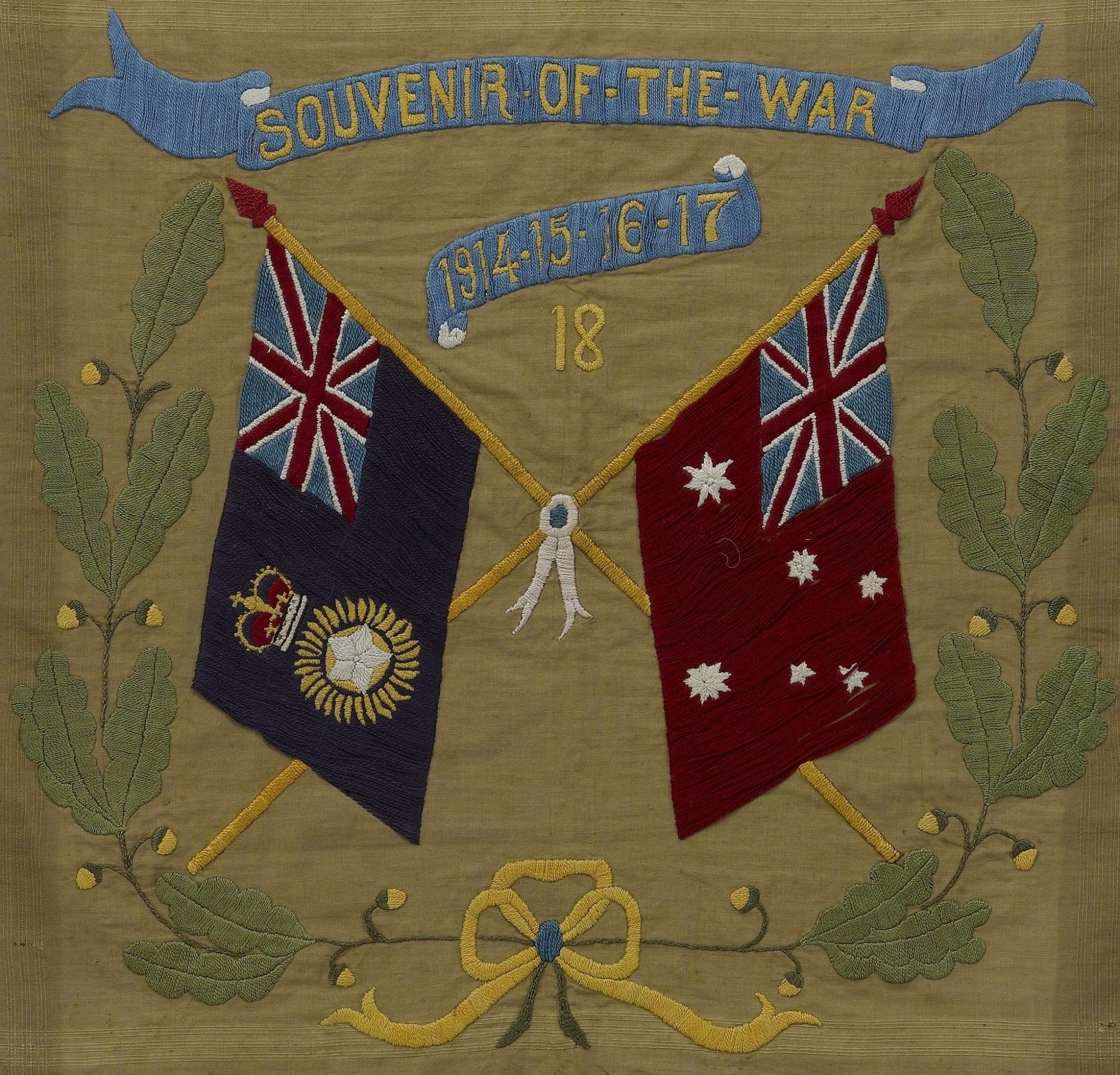
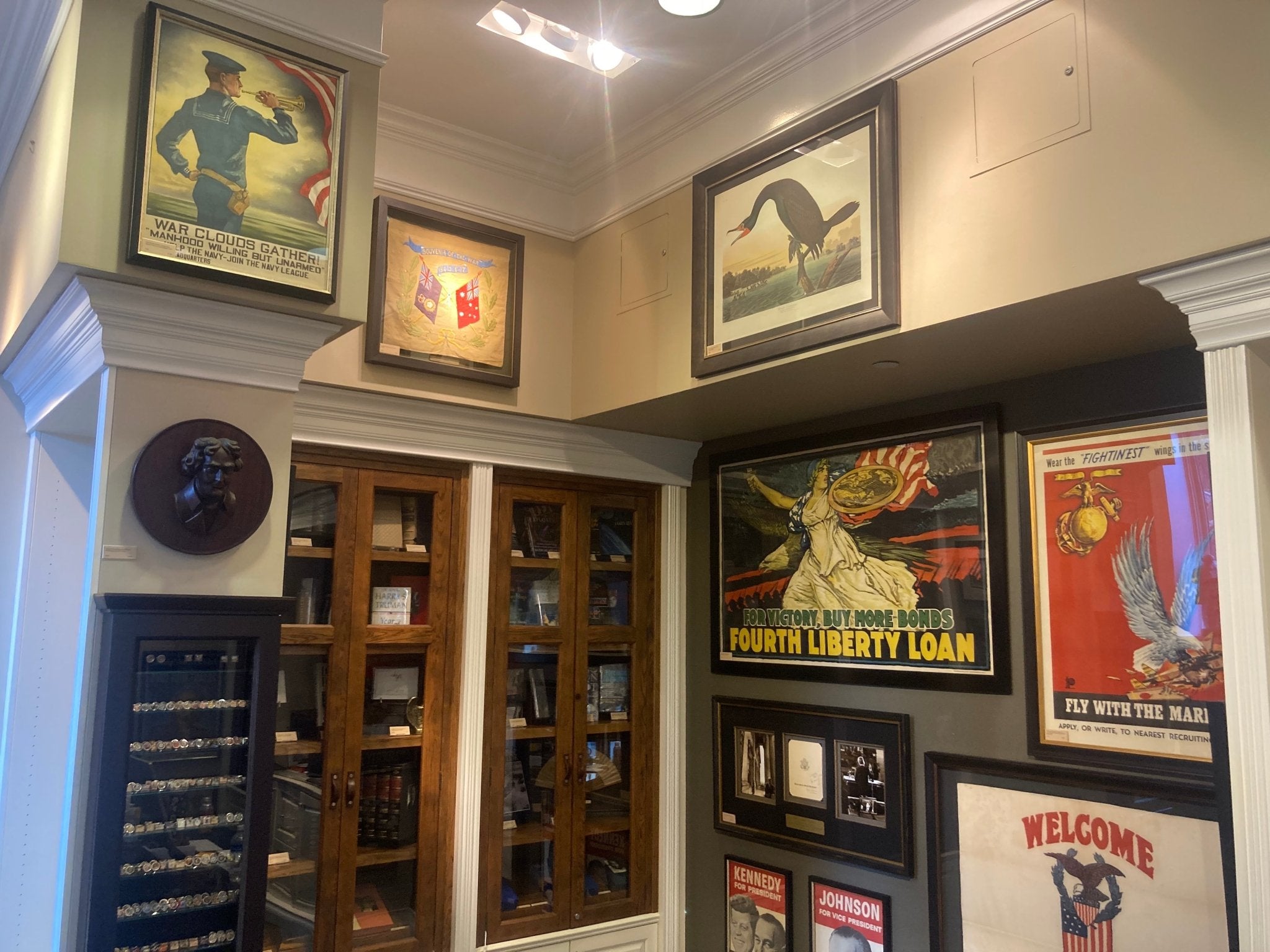
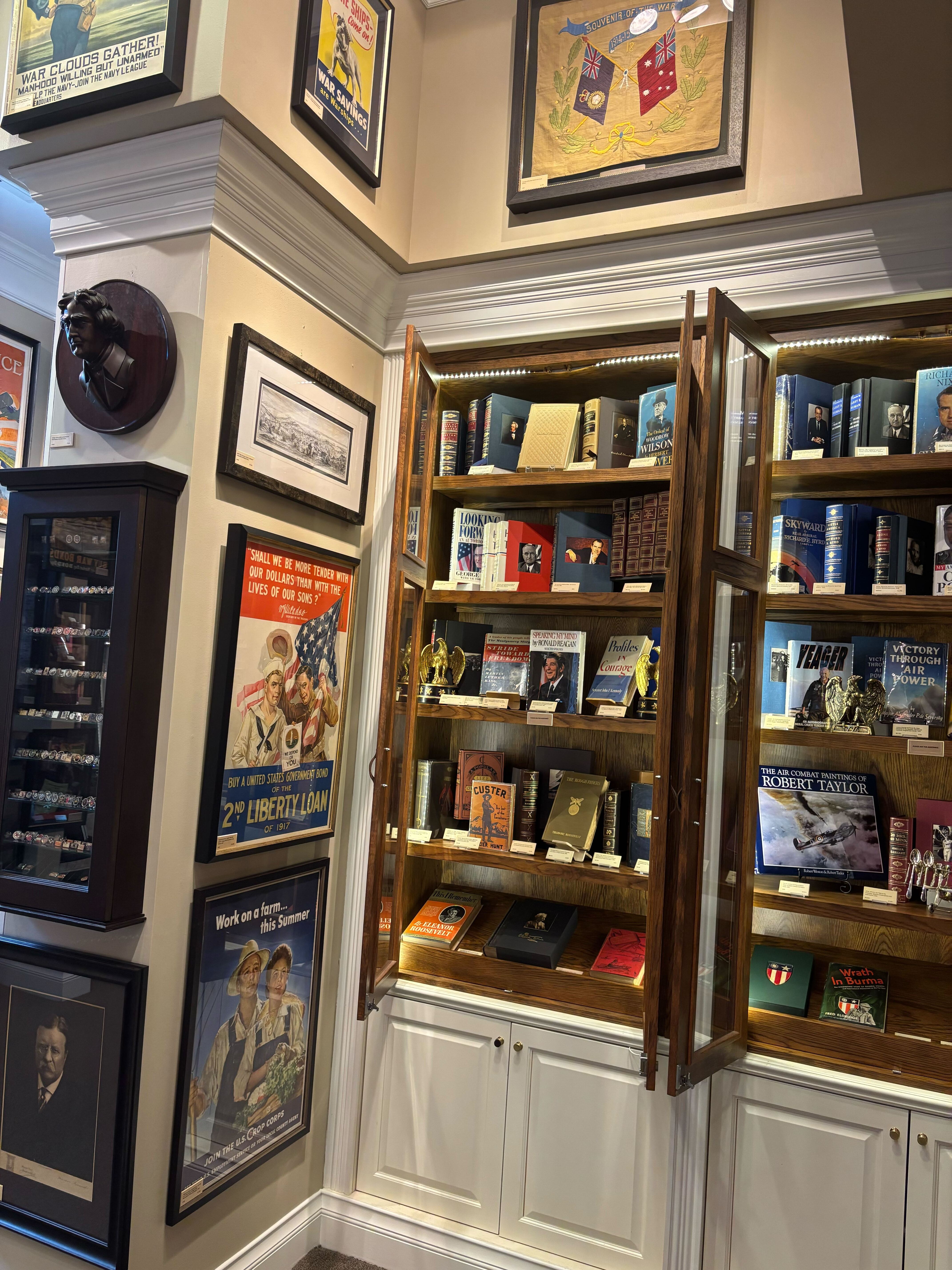
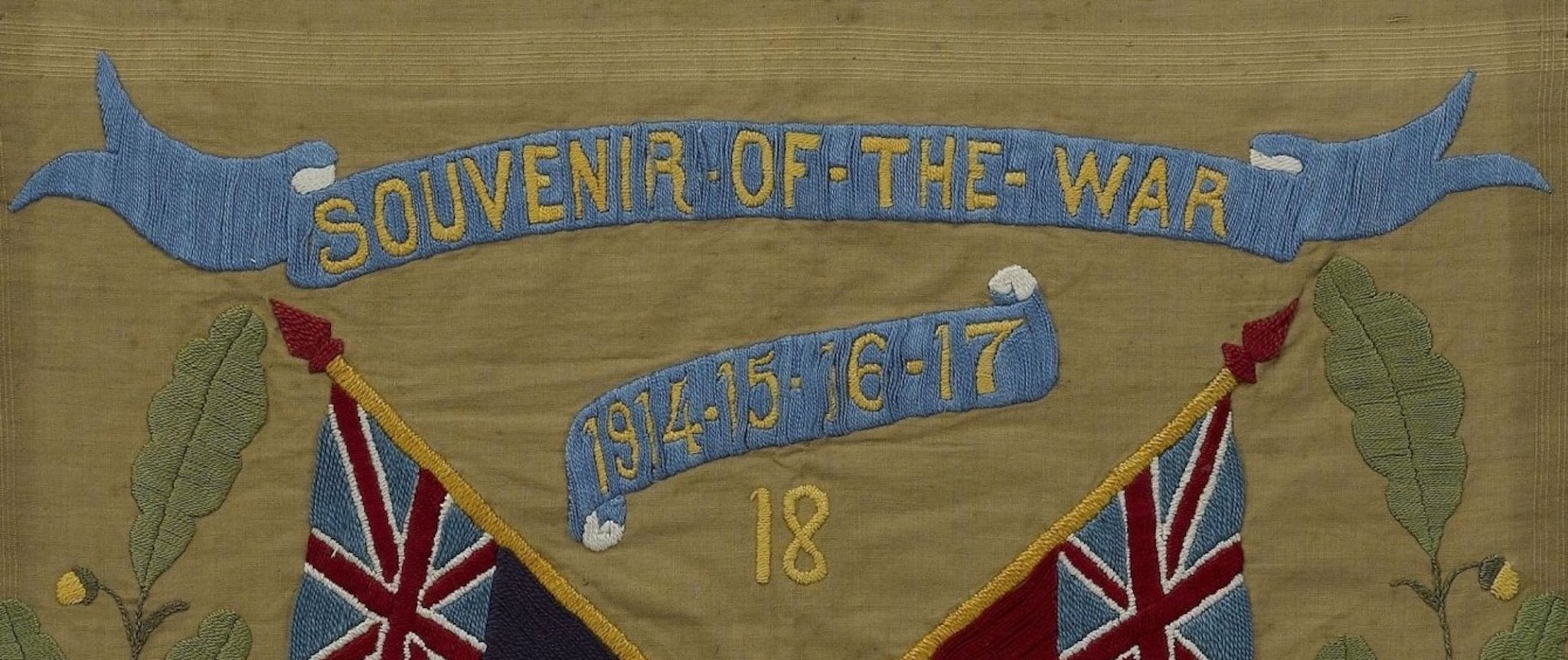
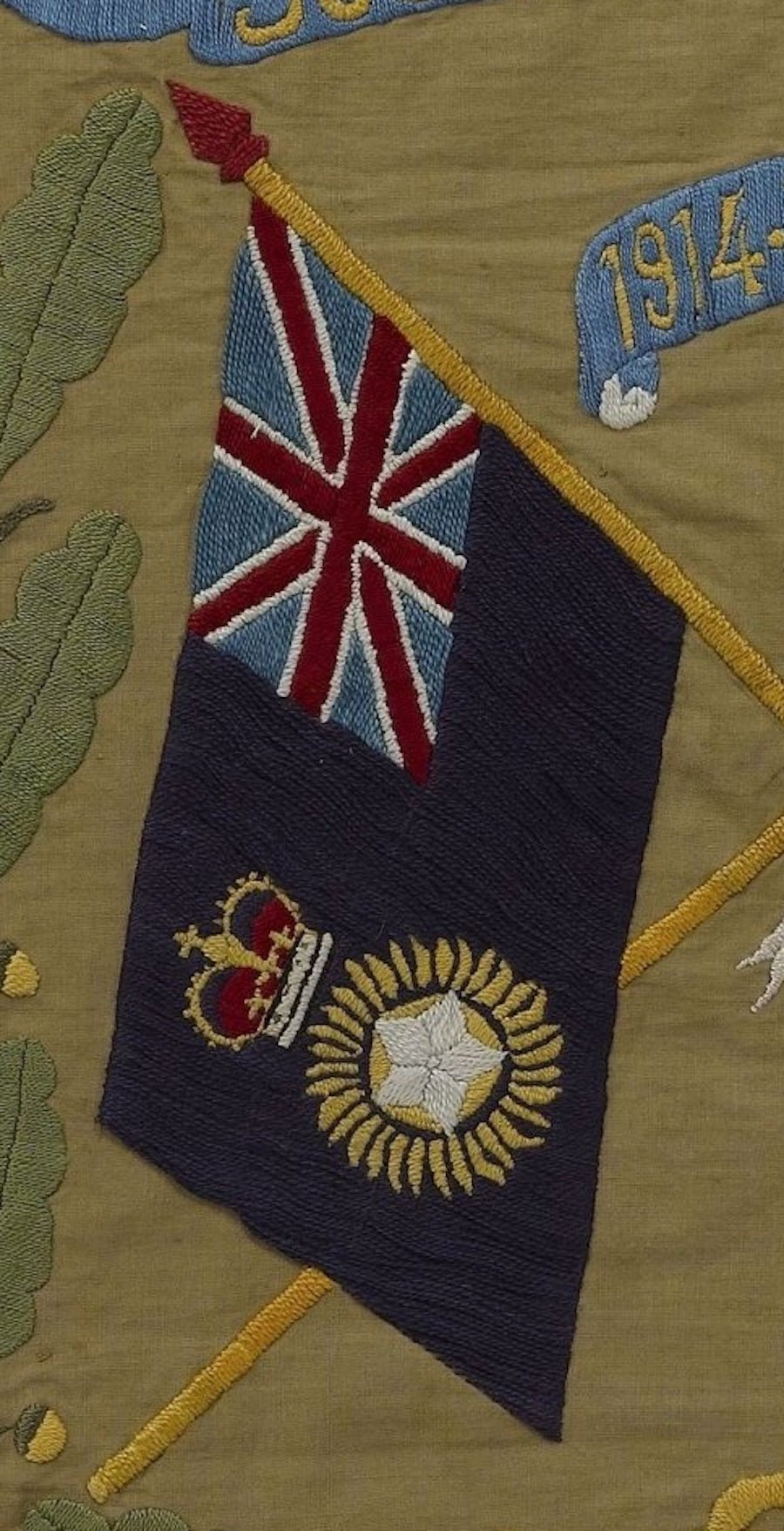
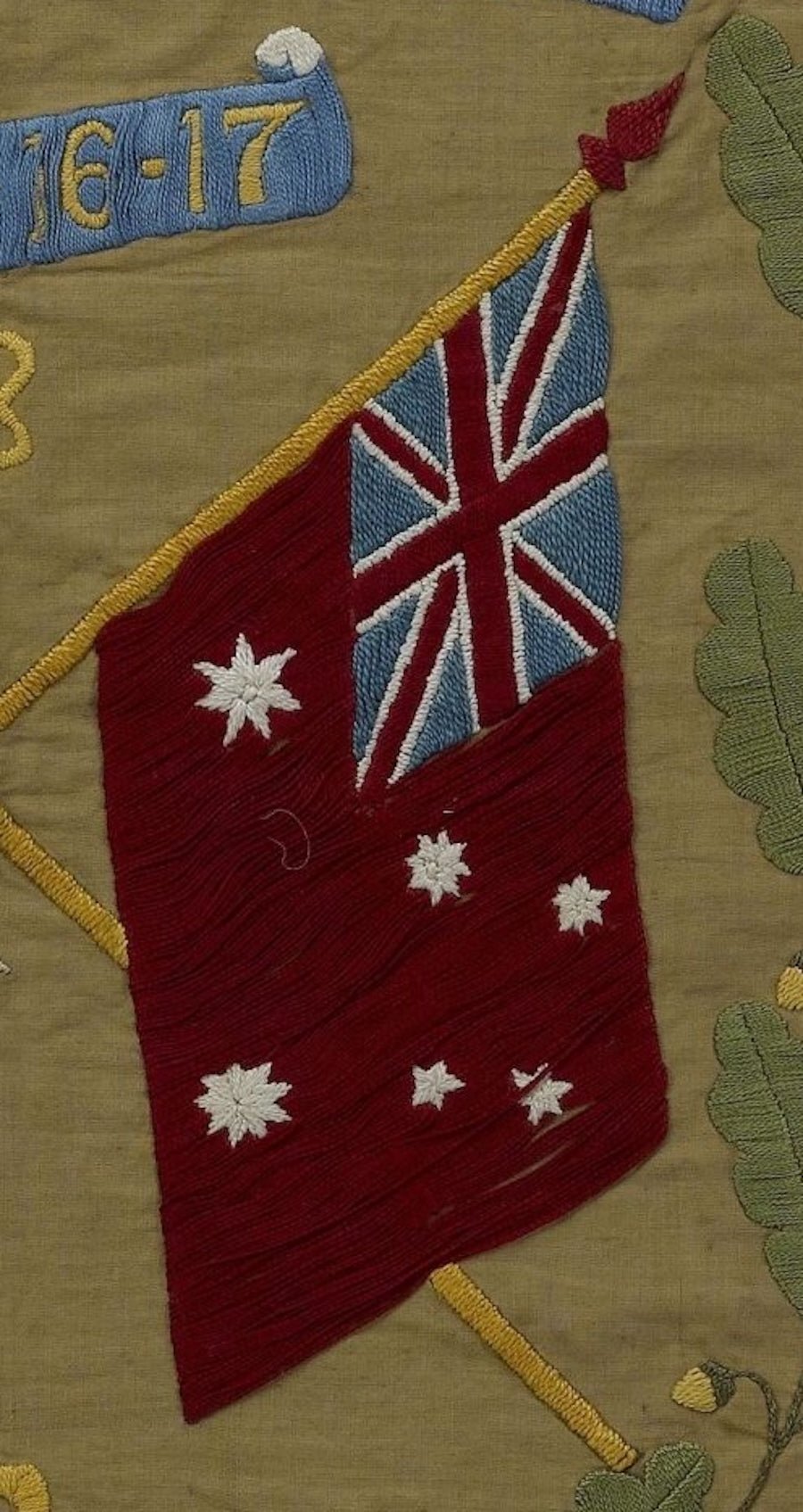
Souvenir of the War 1914-15-16-17-18 Banner
Presented is a stunning textile banner from the first World War, dating to 1918. The square tan cotton cloth is embroidered with two crossed flags, the Royal Indian Marine Ensign and the Australian Civil Ensign, and celebrates both Navies' service during the first World War.
In addition to the flags, two blue scrolling banners are embroidered at the top of the banner. They read “Souvenir of the War” and “1914-15-16-17,” in neat embroidered script. A yellow “18” is embroidered directly below the scroll. The flags are surrounded by a border of sprigs, with green leaves, yellow budding flowers, and a yellow ribbon tying them together.
From the Pacific to the Atlantic, the North Sea to the Mediterranean, the Royal Australian Navy patrolled, escorted, fought and bombarded as part of the British Grand Fleet. In August of 1914, Australia declared its support of Great Britain and the country went to war. While recruiting began in earnest for troops and lighthorsemen, the Royal Australian Navy quickly sailed north with the Australian Naval Military Expeditionary Force to take German New Guinea, and to stop the German Pacific Fleet. HMAS Sydney soundly defeated the German raider SMS Emden in a fierce battle off the Cocos Islands in November of 1914 and the submarine AE2 was the first Allied submarine to successfully penetrate the Strait of Gallipoli, disrupting Turkish and German shipping. On land, the Royal Australian Naval Bridging Train was the first in and the last out of Gallipoli – building pontoons, bridges and jetties for the landings and evacuations of the troops. Later in the war, most of the Royal Australian Navy’s major ships operated as part of Royal Navy forces in the Mediterranean and North Seas, and then later in the Adriatic.
Similarly under the command of the British government, the convoy transporting the first division of the Indian Cavalry to France sailed within three weeks of the Declaration of War, on August 25, 1914. The Royal Indian Marine continued to ferry the Expeditionary Forces of the Indian Army when they traveled to France, Africa, and Mesopotamia (now Iraq) to fight in the Great War. The Marine also carried war stores from India to Mesopotamia, Egypt, and East Africa. By the time the war ended in 1918, the Royal Indian Marine had transported 13,02,394 men, 1,72,815 animals and 36,91,836 tons of war supplies. When mines were detected off the coasts of Bombay and Aden, the Royal Indian Marine also went into action with a fleet of minesweepers, patrol vessels, and troop carriers. Smaller ships of the Indian Marine, designed for operations in inland waters, patrolled the critical waterways of the Tigris, the Euphrates, and Shatt-al-Arab, in order to keep the supply lines open for the troops fighting in those areas. There was even a hospital ship operated by the Indian Marine to treat wounded soldiers.
The Royal Indian Marine and the Royal Australian Navy played a vital role in patrolling waters, as well as supporting and transporting both armies and supplies throughout the Great War. Their gallant contributions are celebrated here with this embroidered 1918 textile.
CONDITION:
Embroidered cotton souvenir. Colors of the embroidery threads are still very vibrant. Scattered stains to cotton cloth. Machine-sewn edges in tan thread. No loss to embroidery. Flag Dimensions: 19" H x 20” W.
Flag is archivally mounted on acid-free linen, with UV Conservation Clear glass, and a custom-built wooden frame. Framed Dimensions: 24 1/4" H x 24 1/4" W x 2 1/4" D
Accompanied by our company's letter of authenticity.
Pickup available at Colorado
Usually ready in 4 hours

Souvenir of the War 1914-15-16-17-18 Banner
Colorado
1 Lake Avenue
Colorado Springs CO 80906
United States
Choose options










Frequently Asked Questions
FAQs
Yes, all of our Antiques are certified authentic. Every antique comes with a signed Letter of Authenticity that details the item’s history, its current condition including any conservation, binding, or framing work, and the item’s provenance. The Letters of Authenticity are priced valuations by our authentication specialists, who assure that items are original and unconditionally guaranteed as genuine for life.
We pack and ship your items from our gallery in Colorado Springs. You may also choose to come pick up your order. Antique items are carefully packed and insured during shipping. The shipping price will be calculated at checkout.
We acquire from a variety of trusted sources all over the world, but mostly through auctions and private collections within the United States. All provenance information will be listed on the Letter of
Authenticity accompanying your purchase.

